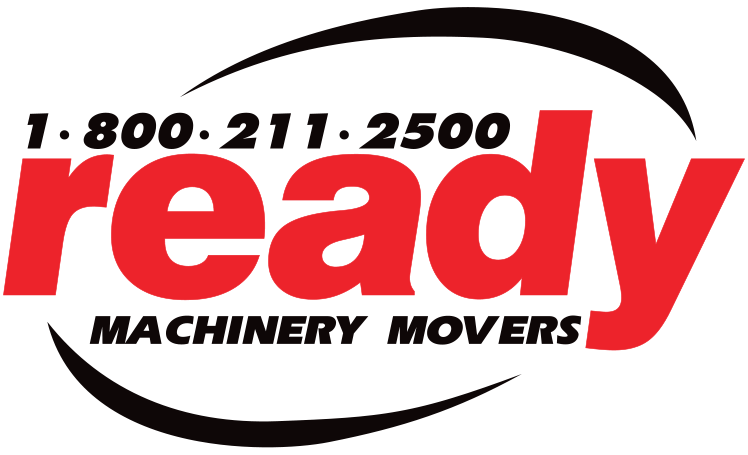Machines deliver a great deal of efficiency in a way manual operations cannot. They help boost your production and your bottom line. However, while they provide massive benefits, metalworking machines can also pose dangers to their operators when utmost care in handling them is overlooked.
Accidents happen. An employee can be struck by chips, sustain burns from hot metals, or have a limb crushed. On top of these hazards, machine guarding issues can also put workers’ health and safety on the line. When left unaddressed, these combined factors might lead to physical injuries in the workplace.
Widening your awareness of common machine guarding mistakes is the first step towards tackling safety issues in the workplace. Below are the assumptions, loopholes, and human errors that every industrial employee should avoid:
- Assuming that a new equipment is consistent with machine guarding safety guidelines
Some buyers assume that new machines are automatically built to meet current safety standards and regulations. This isn’t always the case. In reality, this depends on where it was manufactured as well as the safety standards followed by the machine’s electrical components, control systems, and safeguarding. That’s why it’s vital for buyers of new equipment to specify the safety standards the machine should meet.
Buyers should also examine new machines and ensure they meet Canadian Centre for Occupational Health & Safety (CCOHS) machine guarding guidelines. Remember that a shiny new machine doesn’t necessarily have all the parts needed to protect the workers from danger. Surveying old and new machines will help you determine if they have guarding violations and bring them into compliance.
- Using machine guarding parts built from inferior materials
Machine guarding parts like barrier guards should be made of materials that don’t break, bend, or distort easily. Choose products that can withstand environmental contaminants like coolants, oils, and solvents, as well as extreme temperature changes.
When it’s time to replace machine guarding, it’s best to use the original part used by your manufacturer or a material that has the same level of resistance as the original. The fasteners of your machine guards should be sturdy enough to last long enough for their intended use. Fasteners should also require special tools to remove to avoid unauthorized removal or adjustment.
- Not replacing machine guards accordingly following removal for maintenance
A report reviewing accidents involving mechanical power presses revealed that the leading cause of injuries is the failure to use a safety guard. Workplaces must be proactive in making sure that guards are in place at all times. Where possible, disciplinary actions must be implemented to maintain high levels of workplace safety. Supervisors should see to it that workers do not intentionally remove guards or accidentally leave machines without their guards after maintenance.
- Not putting importance on proper machine guard safety training
Installing machine guards is one thing, and teaching workers the purpose and use of guards is another. Employees need proper training on how essential guard function is, how to properly adjust them to fit their intended machine, and why it’s important to keep away from danger zones once a guard malfunctions.
CCOHS highlights the need for training employees not only on how machine guards use, but also on how to address problems with the protective devices. Both new and old employees need training on identifying potential hazards in the workplace as well as safety protocols for machine operations.
- Failure to update practices on machine guarding safety
As automation and robotics technology grow in popularity, challenges in machine guarding have also increased. The higher number of moving parts and processes place workers’ safety at a much greater risk. Machine guarding applications themselves have their own individual challenges and risks.
The choices that may be applicable for one application may not be appropriate for the other. Different machines also require different guards depending on how they operate, the structure of the work area, and production. One machine may require a fixed guard, while the other may need a laser scanner. Companies need to assess the safety needs of every machine and choose the right guards to meet these needs.
Tips to Increase Machine Safety
In addition to observing proper machine guarding practices, here are other ways you can ensure maximum machine safety in your facility:
- Conduct risk assessment.
Several workplaces still fail at this aspect or perform a risk assessment poorly. Risk assessment allows for the thorough identification of the factors that can place workers in danger. Assessments must be done meticulously, considering that safety issues are not always obvious at first glance. This is especially useful in smaller facilities where evaluating their safeguarding needs is a challenge due to lack of resources. When doing assessments, employers and occupational health and safety experts must tap on the expertise of workers who are handling the equipment on a regular basis.
Among the things to check for during assessments is the pinch points in a conveyor where hands could get caught. Identify these danger zones and put signage as a reminder to workers. Guard these points with a light curtain or a cable that automatically shuts off the machine when someone draws too close to the point.
- Study your machine.
Read your machine’s manual; know how it works. If needed, laminate every page of the manual and place the pages near the operation. Having a thorough technical knowledge of the machine and the safety factors in operating it (e.g. safety distances) will help you have more control over the machine, reducing risks of danger.
- Set up a hierarchy of controls.
Identify ways to minimize risk without interfering with work flow. For instance, after getting an order to install a guard, a staff slaps on a guard without ensuring workers can still accomplish the job. If a guard makes operating a machine feel awkward, chances are someone will remove it over time.
Never overlook safeguarding practices. Wearing personal protective equipment (PPE) is not as effective as safeguarding and is the last resort. Safeguarding should be done right, not randomly.
Here is the hierarchy of machine safety (from most important to least):
- Elimination of hazard
- Barrier guards
- Safeguarding devices
- Safeguarding by location
- Safety training and procedures
- Personal protective equipment
- Know your legal responsibilities.
Accidents are easily preventable if companies comply with safety laws and regulations. As employers, it’s your responsibility to prevent the occurrence of the top
causes of machine-related accidents, including:
- Removal, replacement, or modification of guards due to inconvenience
- Removal of interlocks, leading to easy and unprotected access to dangerous parts of a machine
- Failure to install safety guards on conveyors
Employers are also responsible for repairing damaged or broken machines. Additionally, if a new machine comes from a country with lower safety standards, it needs to be modified to meet North American standards.
- Go back to basics.
No matter how complicated safety laws and regulations might get, the fact remains that it is every employer’s basic responsibility to uphold the health and safety of their workers in any condition.
Have you identified the same machine guarding mistakes in your facility? The key is to correct these errors and work towards increasing safety in your workplace. Start off with the tips outlined above to protect your employees and investment, as well as to maintain greater productivity.
If you need help with relocating to a new warehouse, shipping equipment abroad, or taking out damaged machinery from your plant, dealing with machinery and equipment requires the right tools and skilled manpower to do the job efficiently.
Ready Machinery Movers is willing to assist you with your needs. Call us at 1-800-211-2500. Fill out our contact form to request a quote.
